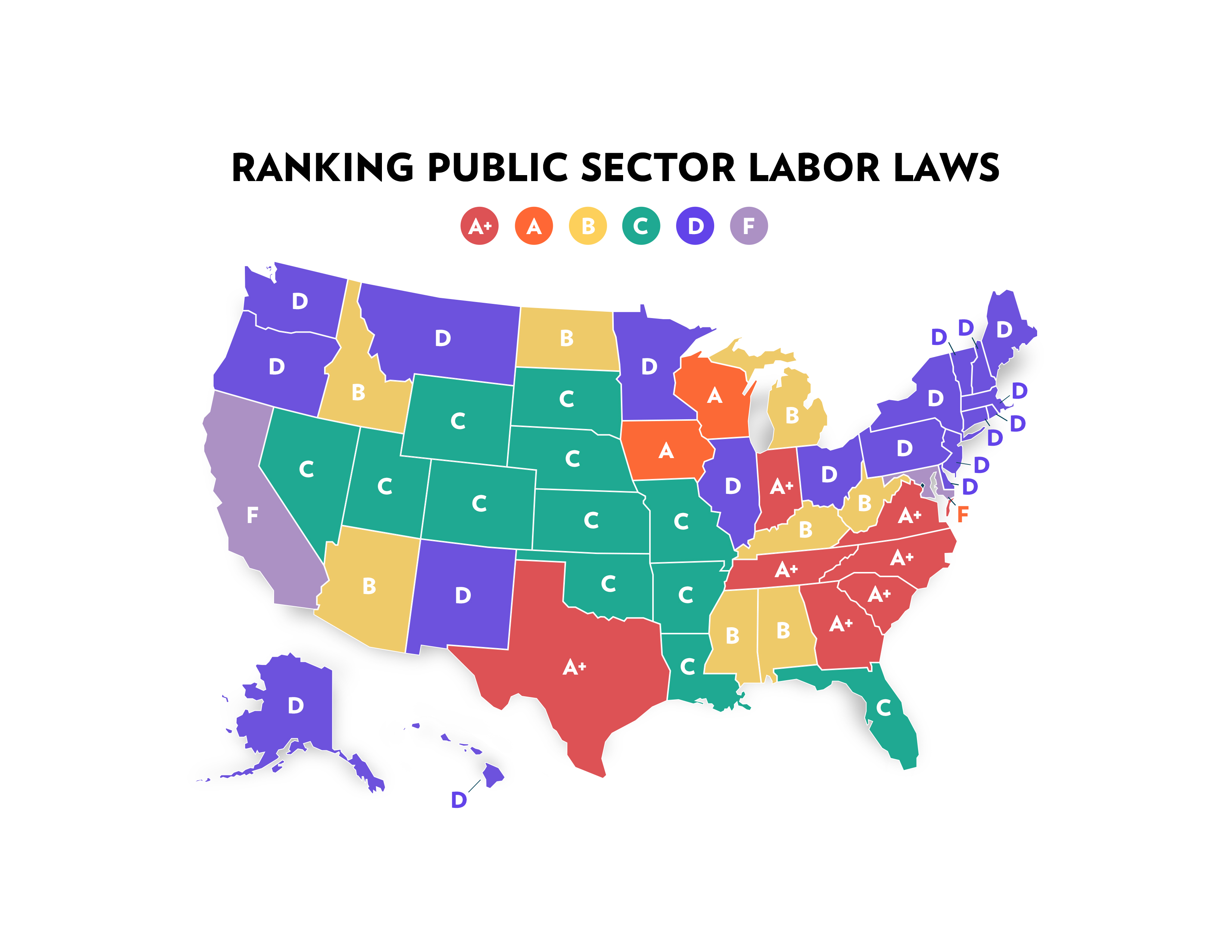Report

Fifty State Labor Report 2017
In the last six years, Americans have seen an unprecedented sweep of public sector labor reforms across several states. Wisconsin, Michigan, Indiana, West Virginia—and most recently, Kentucky in January 2017—have all become right-to-work states. Missouri also passed right-to-work in February 2017, yet, a successful ballot initiative requires voter approval of the law in November 2018. Right-to-work states, including Missouri, now outnumber forced-union states 28 to 22.
Despite unions routinely filing lawsuits against right-to-work laws, most recently in West Virginia, Wisconsin, and Kentucky, the courts continue to uphold the legality of the reforms. Simultaneously, other states have strengthened the parameters of collective bargaining, increased the transparency of union contract negotiations, prohibited using taxpayer resources to fund the collection of union dues, and created stronger protections for individual workers who do not want to be union members.
The reforms are even more remarkable given the largely inert nature of public sector labor law. At the national level, the National Labor Relations Act of 1935 (NLRA) governs most private sector unions. By contrast, public sector labor law, which provides collective bargaining privileges for state and local government workers, is set at the state level. In crafting their laws, the vast majority of states drew their statutory language and scope from the NLRA. Several provisions—such as how a union becomes (and remains) the official representative of all workers in a school or city office—have stayed untouched for 40 to 50 years.
During this time, basic individual freedoms, such as the freedom of association or freedom of speech, have been undermined by various labor laws and practices. Given the new momentum to reclaim these rights for public sector employees, this report outlines and examines public sector labor law across 11 measures that fall broadly into two categories: impact on taxpayers and impact on government workers.
To outline each state’s practices—as seen in the full 50-state table at the end of this brief—we combed through state-level laws, administrative codes, and regulations relating to public sector collective bargaining. Where no law or statutory provision existed on issues such as release time, opt-out windows, or payroll deduction of union dues, we examined local- and state-level labor agreements and used the designation “written in union contracts” to show how such matters are addressed at the negotiating table.

This approach allows policymakers to go beyond right-to-work status, revealing a wider spectrum of reforms that can guarantee greater protections of individual workers’ freedom of association, shield taxpayers from overspending, and produce budget savings. This analysis allows even highly graded states to see untapped areas for reform and improvement.
An online, interactive version of the 50 state table is available online at https://www.commonwealthfoundation.org/state_labor_laws/
View the full PDF version here.